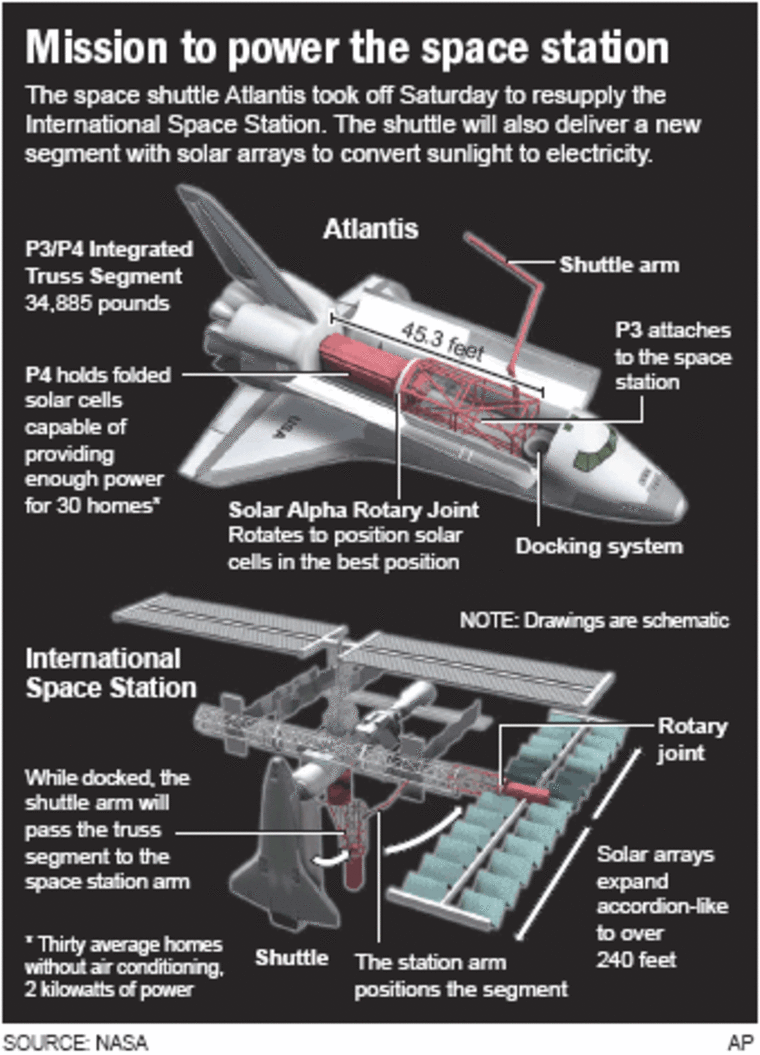Using their ship’s robotic arm, astronauts aboard the space shuttle Atlantis handed over the first big addition to the international space station in almost four years Monday and will conduct three spacewalks to install the giant new section.
The flight marks the first time since before the 2003 Columbia disaster that NASA has added a significant piece to the orbiting space lab. The newly delivered, 17.5-ton structure consists of a truss and electricity-generating solar panels that can rotate with the movement of the sun.
The hatch between two orbiting spacecraft was opened after Atlantis commander Brent Jett eased the space shuttle into the station’s docking port at 6:48 a.m. ET. The rendezvous took place about 220 miles (350 kilometers) above the southeastern Pacific Ocean.
Atlantis pilot Chris Ferguson, on his first trip to space, had a wide grin as he was given a tour of the space station by its crew.
A short time later, the shuttle’s robotic arm was used to grasp the 45-foot-long (14-meter-long) addition in Atlantis’ cargo bay and hand it over to the space station’s own robotic arm.
The crew was on schedule with all the tasks on the to-do list, said lead flight director Paul Dye.
“Isn’t that beautiful?” Dye said. “It’s wonderful to see it happening for real.”
Early Tuesday, astronauts Joe Tanner and Heidemarie Stefanyshyn-Piper are scheduled to make a spacewalk to connect the wiring on the new addition. The task must be performed fairly quickly so the electronic components do not get cold.
Two more spacewalks are planned during the 11-day flight, which began on Saturday.

With both the shuttle and the space station moving at 17,500 mph (28,000 kilometers per hour), the rendevous in orbit required Atlantis to make a series of jet firings that ended with Jett taking manual control of the spacecraft about 1,000 feet (300 meters) from the space station.
“Atlantis is headed your way with a brand new piece of space station in its trunk,” Mission Control radioed.
At about 600 feet (180 meters) from the space station, the shuttle executed a back flip so that the station’s three-man crew could photograph Atlantis’ belly for signs of liftoff damage.
That inspection, like another one performed Sunday using a 50-foot (15-meter) boom with sensors at the end, was added after the Columbia accident that killed seven astronauts in 2003. Foam debris from Columbia’s external fuel tank broke off during liftoff and struck a wing, allowing fiery gases to penetrate when the shuttle returned to Earth.
